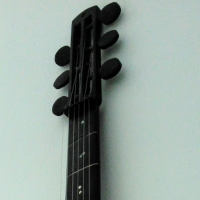DjangoBooks.com
Welcome to our Community!
Categories
- 20K All Categories
- 1.1K General
- 476 Welcome
- 59 Archtop Eddy's Corner
- 146 CD, DVD, and Concert Reviews
- 384 FAQ
- 26 Gypsy Jazz Italia
- 26 Photos
- 202 Gypsy Picking
- 21 Unaccompanied Django
- 15 Pearl Django Play-Along Vol.1
- 17 Gypsy Fire
- 45 Gypsy Rhythm
- 1.4K Gypsy Jazz University - Get Educated
- 130 Gypsy Jazz 101
- 224 Repertoire
- 218 History
- 707 Technique
- 51 Licks and Patterns
- 6 Daniel Givone Manouche Guitare Method Users Group
- 20 Eddie Lang Club
- 1.3K Gypsy Jazz Gear
- 800 Guitars, Strings, Picks, Amps, Pickups and Other Accessories
- 457 Classifieds
- 49 Recording
- 62 Other Instruments
- 18 Violin
- 5 Mandolin
- 22 Accordion
- 7 Bass
- 10 Woodwinds
- 346 Gypsy Jazz Events
- 142 North America
- 109 Europe
- 95 International
In this Discussion
Who's Online (0)
How a Selmer Maccaferri is made
(Just found there’s another thread on this posted two years ago but there has been an additional video since then)
This is a short series of videos showing a gypsy jazz guitar being made. Each of the eight high quality videos, between 3 and 11 minutes long, shows the guitar being made through speeding up the video ( you also have the sound being sped up which makes it sound, if you’re from the U.K., like a Morph/Tony Hart short). Joyfully, there is no voiceover, and you can see in close-up the skill involved, particularly in how the bindings are applied. I learnt a lot in a short period of time how much is involved in making one, particularly the amount of specialist jigs that are used. The builder is Marko Jujic.











Comments
A question for the luthiers on the forum:
Is it standard to notch the sides so that the top braces extend (tie into?) them like Marko does here? I perhaps naively thought they just abutted the sides as a tight fit.
Also, I'm always appreciative when I see these videos of the incredible sense of detail they have in making some of these fits with chisels and sanding such that the fit is exact. I true sign of excellent craftsmanship is the pride in the work being done to exacting specifications.
The precision amazed me. I’ve considered going on a guitar making course but I think at my age an acoustic guitar would be beyond me. Seriously, had no idea about the amount of skill needed to pull off such fine details in a GJ guitar, but it also explains the high price of handmade guitars
I'm not sure about the original Selmers but in general this is very common.
Depending on the brace I think people do two things
1) if it's a small brace, they will thin it out till it's almost down to nothing (like the thickness of two pieces of paper) and then basically clamp it hard so that the brace is locked in between the top and the sides. This prevents the end from separating from the top over time and maybe causing a buzz or further coming loose. That said with small braces it depends, people can terminate them or run them out to nothing without putting them under the sides.
2) if it's a large brace it is common to thin it down to like 2-3mm and then notch the sides so that it fits snugly into the sides. Kinda does the same thing but it's a little more structural. This is more common on the larger braces that I would consider non-acoustic and more structural (the braces in the upper bout near the neck). If you didn't do this, you'd end up with a weak spot right along the sides where the brace ended. That brace is going perpendicular to the top grain and is much stronger than the top. So if you had a gap between the brace and the sides, it would be a likely place for the top to crack. But if you lock it into the sides, this becomes a lot less likely.